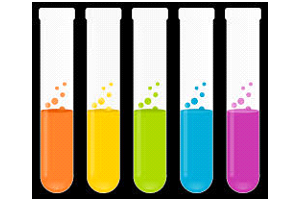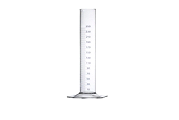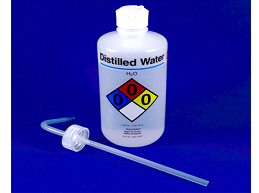Date : 3 November 2014
Objective
1. To measure the miscibility temperatures of several water-phenol mixtures of known composition
2. To construct the mutual solubility curve of a pair of partially miscible liquids, which are phenol and water and determine the consolute temperature for water-phenol system.
Introduction
A few type of liquid are miscible to each other for example ethanol and water. But there are also a type of liquid which have miscibility in limited proportion such as ether and water and also phenol and water (phenol is not really liquid but it is considered to be so because the addition of the first part of water reduces the solid’s melting point under room temperature to produce a liquid-liquid system. However there is also an immiscible liquid such as water and mercury.
In general both liquid will become more soluble with an increasing in temperature until consolute point is achieved. Above this point the liquids become completely miscible. All combination of phenol and water above this temperature will only produce one liquid phase system.it is possible that any pair of the liquid can form a closed system. In which both critical solution temperature occur at above and below of it however it is not easy to determine the both the temperatures except for nicotine and water.
At any temperature below critical solution temperature, the composition for two layers of liquid in equilibrium condition is constant and not depends on comparison amount for both of these phases. In general, the miscibility between a pair of liquids which is partially soluble is so affected by existence of third component.
Apparatus
Test tube
Test tube rack
Test tube holder
Measuring cylinder
Water bath
Ice
Material
Phenol
Distilled water
Experimental Procedures
1) A tightly sealed tubes containing amounts of phenol and and water is given to produce phenol concentration scale between 8% to 80% as shown.
Phenol
concentration
scale
|
8%
|
11%
|
20%
|
35%
|
50%
|
63%
|
70%
|
80%
|
Volume of
Phenol (mL)
|
1.6
|
2.2
|
4.0
|
7.0
|
10.0
|
12.6
|
14.0
|
16.0
|
2) The tubes was heated in a beaker containing water to increase temperature.
3) The water was stirred and the tubes was shaked as well.
4) The temperature of each tube was observed and recorded at which the turbid liquid
becomes clear .
6) The temperature at which the liquid becomes turbid and two layers were separated was
recorded.
7) The average temperature for each tube was determined at which two phases are no longer seen or at which two phases exist.
8) Besides heated, part of the tubes may need to be cooled as instructed above.
9) The graph of phenol composition in the different mixture against the temperature at
complete miscibility was plotted.
10) The critical solution temperature ( consolute temperature ) was determined.
Result
|
Phenol Composition ( % )
|
8
|
11
|
20
|
35
|
50
|
63
|
70
|
80
|
|
Average Temperature (°C )
|
46
|
51
|
55
|
67
|
59
|
42
|
39
|
-
|
Questions
1. Discuss the phase diagram with reference to the phase rule.
For a system at equilibrium the phase rule relates:
P = number of phases that can coexist, to
C = number of components making up the phases, and
F = degrees of freedom.
Where these three variables are related in the phase rule equation P + F = C + 2
Applying
the phase rule to the phase diagram above, it shows a 2 component
condensed system which is phenol and water at complete miscibility ,
having one liquid phase .
Rearrange the phase rule equation,
F = C – P + 2
F = 2-1+2
= 3
By
this, we need three variables to define the system, that is
temperature, composition of phenol in water and pressure. The system
has degree of freedom of 3.
For
2 component system contains 2 liquid phases, that is when phenol and
water are partially miscible or immiscible, we need at least 2 intensive
variables to define the system,
F = C – P + 2
F = 2 - 2 +2
= 2
Thus,
the 2 intensive variables are pressure and temperature. As the
temperature is fixed during the experiment, F is reduced to 1. By this,
temperature is the only variable to define the system.
From
the diagram, it can be seen that the compositions of the 2 phases are
fixed by the points at the end of the tie line in a given temperature.
2.Explain the effect of adding foreign substances and show the importance of this effect in pharmacy.
The addition of foreign substances to the 2 component system/ binary
system ( phenol and water) results in ternary system. The nature the
foreign substance will cause different effects on the system. If the
foreign substance is only soluble in one component of the system ( water
or phenol ), in other words, if its solubility in both liquids of the
system are very different, the upper consolute temperature will be
raised which means the mutual solubility between water and phenol will
be decreased.
On the other hand, if the foreign substances is soluble in both
liquids, the upper consolute temperature will be lowered which means the
mutual solubility between water and phenol are increased. This process
is also known as blending. This is a important process in pharmaceutical
industry as the pharmaceutical product like ointment, cream or drugs
usually contains more than one component in it. The mutual solubility
between the components can be enhanced by blending and less energy is
needed during the formulation of the products. This also ensures the
even distribution of the active ingredient in the products so that the
product is effective to use.
Discussion
Phenol and water system is one of the examples of
two-component system with liquid phase. Phenol is immiscible with
water.In this experiment, if a small amount of liquid phenol is added to
a large volume of water, it will show single phase system, which means
the solution of phenol in water. If a small amount of water is added to a
large volume of liquid phenol, it shows a single phase system, which
means the solution of water in phenol. The two phase system will become
one phase when water and liquid phenol are mixed in ‘comparable’ proportion,.
The solubility of partially miscible liquids raises with temperature.
In this case, the solubility curve depicts a maximum point at the
“critical solution temperature” above which the two liquids become
completely miscible at all proportions. For other liquid containing two
component system like ether and water, the solubility decreases with
temperature and the solubility curve exhibits a minimum points at the
critical solution temperature below which the two liquids become
completely miscible and become one phase at all proportions.
In this experiment, the consolute temperature is 67.0
ºC. All combinations of phenol and water above this temperature are
completely miscible and produce one-phase liquid systems. In actual
fact, the upper consolute temperature of
the phenol-water system is 66.8 ºC. However we obtained 67.0 ºC in this
experiment. This slight inaccuracy is caused by some minor errors when
we handled the experiment.
Some precautions should be taken in order to obtain a
more accurate result. One of it is to adhere the plastic film on top of
the boiling tube after placing the thermometer in the middle of mouth of
boiling tube after addition of phenol. This is important as phenol is a
volatile liquid as it will become vapour and this will reduce the
volume of phenol in the test tube.furthermore, it is also a carcinogenic
chemical which is toxic to our body if we inhale excessive phenol
vapour. Besides, the reading of thermometer should be taken at the
meniscus of mercury to prevent parallax error which leads to inaccurate
reading. Pipette should be used instead of measuring cylinder to measure
the volume of chemicals as pipette is much more accurate. Goggles and
gloves should be wear throughout the experiment as phenol is acidic and
carcinogenic. Other than that , the boiling tube should be shoke gently
while it is in the water bath to produce a uniform mixture of solution.
In pharmacy, the phase diagram is used to formulate systems containing
more than one component to achieve a single liquid phase product.
Conclusion
The critical temperature for phenol-water system is 67.0ºC.
Phenol is partially miscible with water and produces one liquid phase
system at certain temperature and concentration when pressure is fixed.
At a temperature above 67.0ºC, combinations of phenol and water will be
completely miscible and one-phase liquid system is formed.
References
Alexander T Florence. David Attwood. 2006. Physicochemical Principles of Pharmacy. 4th edition. Pharmaceutical Press.
Martin,A.N,
Physical Pharmacy: Physical Chemistry Principles in Pharmaceutical
Sciences. 5th Edition. Philadelphia: Lea & Febiger, 2006
Predel, Bruno; Hoch, Michael J. R; Pool, Monte. Phase Diagrams and Heterogeneous Equilibria : A Practical Introduction. Springer
Predel, Bruno; Hoch, Michael J. R; Pool, Monte. Phase Diagrams and Heterogeneous Equilibria : A Practical Introduction. Springer
Theodore L. Brown, Lemay, Bursten, Chemistry The Central Science, Ninth Edition, Pearson Education, 2003.









No comments:
Post a Comment